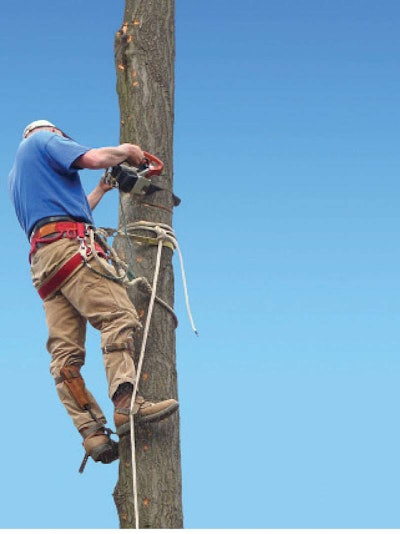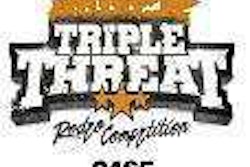
Landscapers in today’s economy are motivated by their competition and lure of profits to diversify their services and provide a steadier income to a loyal workforce.
There certainly can be benefits in becoming a full-service business and adding tree service to your portfolio, but there is risk, as well.
Being a “tree guy,” I can tell you that failure in tree work can have catastrophic results. Tree work is among the most dangerous occupations.
So, if you are contemplating adding tree service to your business or if you already have one, pay particular attention to how you recognize and train for the acute hazards inherent in this work. Be aware that the moment you decide to ask your employees to leave the ground as part of their daily jobs, you add significant risks, liabilities, insurance costs and regulatory complexity to your business.
An average of 197 landscape service workers died from on-the-job injuries each year between 2003 and 2006, according to a publication from the National Institute for Occupational Safety & Health (NIOSH), Publication No. 2008-144: Fact Sheet — Fatal Injuries Among Landscape Services Workers. The fatality rate for the landscape services industry, about 25 deaths per 100,000 workers, is similar to that for more recognized high-risk industries, such as agriculture and mining.
The statistics are sobering when you consider that many of these accidents are happening in a relatively small segment of the landscape services worker population. You guessed it: tree work.
Landscape Services’ Fatal Accidents: Transportation (dark blue) — 32%; Contact with (light blue) — 25%; Falls from (brown) — 22%; Expose (green) — 16%; Other causes (purple) — 5%Take a look at the pie chart to the right. It is a slightly different representation of the NIOSH/CDC data, and here’s an explanation and anecdote for each of the larger slices.
Transportation: Employers share a common concern about getting to and from the worksite safely each day. Many workers show up in the morning in pickup trucks and leave the yards in 10- to-13-ton vehicles with trailers and obscured rear visibility. Make sure to provide enough training to help them with that driving transition.
Contact with: This is mostly workers who are struck by falling trees or pieces falling out of trees. There is a rule of thumb from tree riggers that says for every foot an object falls, it gains a unit of its own weight plus one. That means a 30-pound branch dropped 20 feet hits the ground (or the worker) with a force of 630 pounds.
Falls from elevation: Tree care safety standards advise that workers shouldn’t leave the ground without being secured from falling, except to ascend a ladder. And yet, we see unsecured falls from the tops of ladders, out of trees and out of aerial lifts with alarming regularity.
Exposure: In this study, exposure really means electrocution. Electricity is hazardous because it doesn’t let you know it’s there. Many favor aluminum pole saws and pole pruners as well as aluminum extension ladders because they’re lightweight, durable and relatively inexpensive. Utilities also favor this same metal in their construction for the same reasons and because aluminum is an extremely efficient conductor of electricity.
If you’re serious about tree work, you’ve probably made investments in vehicles and equipment, in personnel, in marketing and more. If you haven’t done so already, make an investment in your knowledge of accepted safe work practices.
At minimum, purchase a copy of ANSI Z133, the American National Standard for Arboricultural Operations – Safety Requirements. It is available from the Tree Care Industry Association (TCIA), the International Society of Arboriculture and selected arborist supply companies. The two organizations, TCIA and ISA, offer a variety of training programs and certifications to help bolster knowledge of tree care and safety.
To move forward as an industry and become safer, commit to a culture of safety. This requires management that commits to properly train and equip its field workers and employees who understand risks and who look out for one another.
Do you have someone in your organization who is well versed in the hazards of tree care and competent to train others in avoiding these risks? The Certified Treecare Safety Professional (CTSP) program, administered by TCIA, was designed to address the challenges to safety that tree-care companies face. It would best be characterized as a safety trainer credentialing program, but it goes beyond the safety knowledge and delves deeply into how we train.
A strong safety culture is imperative in tree care where the hazards are inherently greater. A culture of safety can only be developed one company and one individual at a time, and, as this happens, our industry will be transformed.
EDITOR’S NOTE: This article was written by Peter Gerstenberger. Gerstenberger is senior advisor to the president for safety, compliance and standards at the Tree Care Industry Association, a national trade association for commercial tree care professionals.









